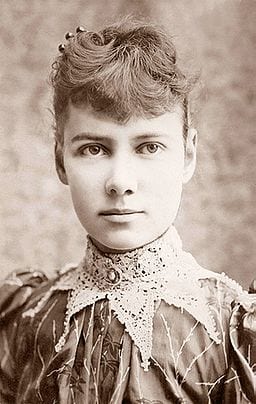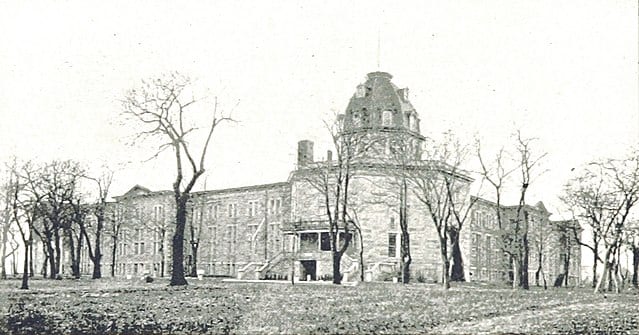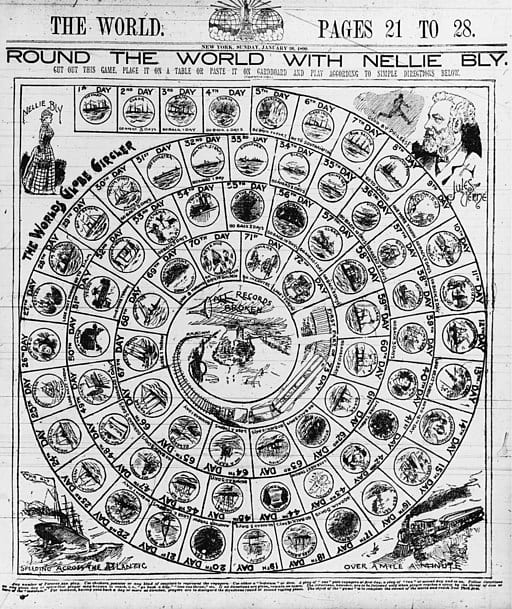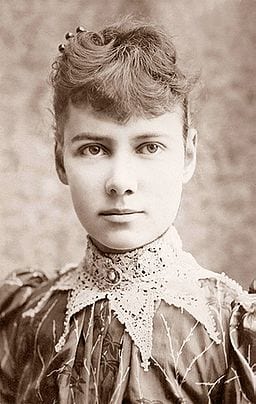Do you enjoy shows like 20/20 and Dateline? Especially when they send folks undercover to expose some corrupt organization? Then you should take a second to think about Nellie Bly, because those shows owe a serious debt to her. Nellie Bly essentially invented modern investigative journalism with an embedded 10-day investigation inside an insane asylum.
Yikes.
Here are 11 essential facts you need to know about Nellie Bly:
1. Nellie Bly is a pen name
Bly was born Elizabeth Jane Cochran in Cochran, Pennsylvania on May 5, 1864. Nellie Bly was a name she picked out when she started her first newspaper job at the Pittsburgh Dispatch.

Photo Credit: Wikimedia Commons
2. A fiery letter to the editor got her a job offer
Bly was discovered after she wrote a letter in response to an Op-Ed titled “What Girls Are Good For,” which said women shouldn’t work. The editor printed her letter, and after she wrote her first article about divorce, he hired her full time.
3. She wanted to write for everyone, not just women
Bly was often pushed to write for women and stick to light, fluffy articles. But she wanted to write about real issues, so she left Pittsburgh to work for the New York World.

Photo Credit: Wikimedia Commons
4. She wrote an awesome resignation letter
When she left the Dispatch, she left a note that read: “I am off for New York. Look out for me. —Bly”
5. She got herself committed to an insane asylum
She was asked by the World to write about insane asylums. To do this, she went and got herself committed. She checked into a boarding house, acted erratically, and soon after a judge had her committed.

Photo Credit: Wikimedia Commons
6. She exposed the harsh treatment of patients
She spent 10 days as a patient in the Blackwell Insane Asylum. She noted that there were just 16 doctors to treat 1,500 patients (in a facility designed for 1,000). Patients were made to bathe in ice water and were forced to sit still on benches, often for hours at a time. The food was moldy and spoiled and the water was often contaminated.
7. She also exposed the mistreatment of immigrants
Bly was surprised to discover that many of the inmates at the asylum weren’t insane—they just couldn’t speak English. Some were impoverished and had no family to rely on. They couldn’t defend themselves, and they couldn’t communicate. The treatment they received at the asylum was actually psychologically damaging to these women, who were healthy before they were committed.
8. Her work brought about real change
New York responded to Bly’s articles quickly. Her reporting was a national sensation, and in response, a grand jury investigated her claims. New York added $1 million per year to the asylum’s budget, made staffing changes and hired translators to help immigrants.
9. She went around the world in 72 days
Bly was a national sensation again after deciding to travel around the world in 80 days or less in honor of the book by Jules Verne. She made the trip in just 72 days, which was a world record.

Photo Credit: Wikimedia Commons
10. She was an inventor
Bly married Robert Seamen, a millionaire with a manufacturing company. Although she eventually “retired” from muckraking journalism, she actively worked on inventions for the company, patenting several – some of which are still in use today.
11. She got to cover stories that mattered
Bly returned to writing later in life, working as a foreign correspondent during World War I. She also covered the women’s suffrage movement. She was still working when she died of pneumonia on January 27, 1922.






